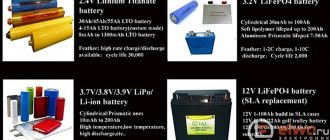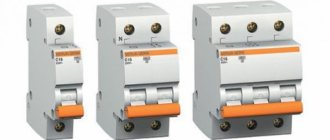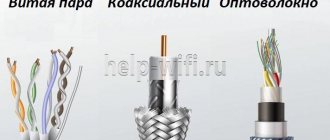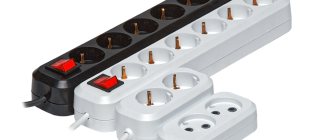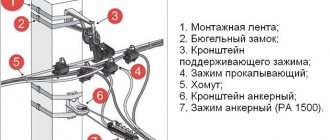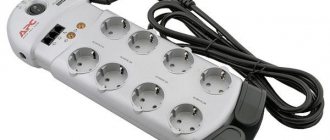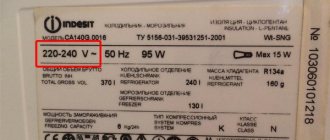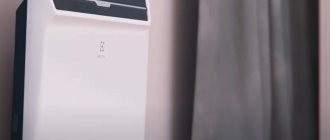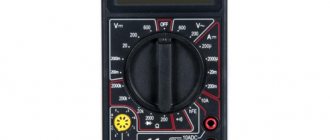In Soviet times, electrical energy consumption in apartments and private houses was relatively small. However, the situation has changed in recent decades. A modern home contains a large number of household appliances, which together consume a lot of energy.
As a result, there was a need for three-phase power supply, which made it possible to organize more powerful channels for supplying electricity. In addition, many types of equipment, such as electric boilers, are produced only in three-phase versions. To organize a connection of this type, you need a three-phase socket, which will be discussed in this article.
general information
Power connectors are made from high-quality, flame-resistant plastic with good mechanical strength. The metal parts of the structure are distinguished by anti-corrosion properties. The design of the device prevents accidental ingress of dust particles, oils, gasoline and water. The device can be operated under significant temperature variations and in conditions of high humidity.
The plug connector is characterized by a flexible round bracket that secures the current-carrying cable. The terminals are made of tinned high-quality copper, due to which the connections acquire decent electrical characteristics. The arrangement of internal contacts corresponds to the standard layout. Incorrect connections are virtually impossible because different wire colors are used for different voltages.
Preparing for cable installation
Having calculated the power of each room, then you need to select the necessary wires and interlocks from the table. Looking ahead, it should be taken into account that in the future some work may be carried out, for example, changing a chandelier or installing a suspended ceiling, all of which requires turning off the lights. To avoid blackouts in the apartment, you should install your own machine in each area.
When laying cables for sockets, photograph the places where the wires are laid and record them with a detailed description accurate to the millimeter. Quite often it happens when repairing or installing any elements that while drilling with a hammer drill they touch the wires and de-energize the room. Correcting this incident will take a lot of time and nerves, so you should be warned in advance.
Drilling holes for sockets
When everything is marked, counted and purchased, you can proceed to the main thing - gating, drilling and connecting. Some may have a question: how many sockets should there be in a room, and at what distance from the floor? A timely and necessary question, in each room it is recommended to have at least 3 sockets, for convenience, and not next to each other, but on each wall, so that there are no extra wires on the floor later. Kitchens, as a rule, are double or triple and are located above the work tables, and for the refrigerator and stove below at a distance of 30 cm from the floor. According to the latest standard, switches are installed at a distance of 80-90 cm. But for convenience, it is best at the height of your lowered hand.
Tool
In order not to fuss during the work process, you should prepare all the tools in one place in advance. For gating and drilling we will need:
- Tape measure and alcohol marker.
- Laser or bubble building level.
- A hammer drill with a diamond bit for concrete and a chisel-shaped attachment.
- Grinder with a diamond blade.
- Gloves, overalls and respirator.
The marked lines are cut with a grinder, after which the cut pieces are knocked out using a hammer drill with a mounted chisel. If you get the hang of it, you can quickly complete this job. Then, at the planned location, use a level to mark the center of the socket and drill out a niche with a diamond crown. During operation, the tool must be held level, otherwise the glass and socket will stand crooked. Don't forget about the distribution boxes, which should also be built into the wall.
Variety of devices
Sockets are qualified according to many criteria. First of all, we are talking about the voltage rating. Today, for single-phase networks, connectors with three contacts (ground, phase, neutral), four contacts (3 phases, neutral) and five contacts (ground, 3 phases and neutral) are offered. Connectors are produced in stationary and portable versions.
Devices are available that are designed for installation directly above the baseboard. The safety of such devices is achieved thanks to the rotating washer. For example, a plug can be connected only after turning it at a given angle. The functions of the branch box are performed by the lower part of the device. Above-plinth plug sockets have flat contacts, making it possible to connect two plugs at once.
Power connectors also differ in a number of characteristics.
By installation method
According to this characteristic, the following sockets are distinguished:
- Open installation. Used when there is exposed electrical wiring. It is an overhead box mounted on a wall. Most often, this installation method is used in wooden buildings, loggias, wet rooms, and outdoors.
- Hidden installation. Always corresponds to the hidden type of electrical wiring. The wires are laid in grooves hollowed out in the walls, and the socket itself is placed in a niche (socket box). Hidden electrical wiring is most often used in residential buildings and apartments.
Environmental sustainability
Sockets also differ in the degree of protection. The most common protection class is IP44, where the first number indicates the degree of protection from dust particles, and the second indicates moisture resistance. The total number of numbers used is from zero to six for dust protection and from zero to eight for water protection.
By type and purpose
According to this criterion, the following are distinguished:
- AC power plugs and receptacles without a protective grounding connection are among the simplest types of connectors.
- Connectors equipped with grounding. In addition to holes for pins, such devices have a special plug-pin or side contacts, which play the role of a grounding conductor. This design is designed to mate with the ground contacts before the plugs and power contacts touch each other.
- Connectors with curtain fuses. Such curtains open only when the pins enter both contacts at the same time.
- Sockets with ejectors. The ejector is built into the body of the device and is activated when you press a key.
- Connectors with timers. Such devices can be programmed for a specific time: you can set the connection or disconnection of contacts on a schedule.
- Sockets with RCD (residual current device). Such devices are intended for areas with increased danger.
By service life
The service life and reliability of socket contacts are described by such an indicator as the number of “on/off” cycles. High-quality products can go through up to 100 thousand cycles.
The best option for making contacts is a spring mechanism that includes a pair of contact tabs.
Clamps can be quick-clamping or double. Both types of clamps are characterized by decent quality, but quick-release mechanisms are easier to install, although more expensive.
Compliance
When choosing accessories, you should pay attention to the fork diameter. For Russia and other countries of the former USSR, the diameter is 4 millimeters, but in European countries a different standard has been adopted (the so-called European standard, or Euro socket) - 4.8 millimeters. Different connectors may also have different pin spacings.
Connection instructions for 380 V
Connecting a three-phase outlet is more complicated when compared with a 220 V network, where phase and neutral can be swapped.
The connection is made in this order:
- Turn off the voltage in the panel. We test the voltage with an indicator screwdriver.
- We connect phases A, B and C to contacts L1, L2, L3. Moreover, the sequence is arbitrary (it only affects which direction the electric motor will rotate).
- We connect zero to contact N.
- We connect the grounding conductor to PE.
- We supply power, test the phase, measure the voltage at the terminals.
Connection details
As already mentioned, the outlet can be designed for hidden or open installation. In the latter case, the device is mounted on the wall, and in the case of a hidden installation, the main part of the socket is located in the wall.
The body of the device performs not only an aesthetic, but also a protective function. Thanks to the external panel, access of foreign substances to live elements is protected. The panel also protects residents from accidental contact with live parts.
Electrical power is directed to the cable connectors and received from the plug by consumers. The wiring is connected to the contacts through clamps on screw terminals.
Flexible electrical cables can be used with power connectors. These cables include stranded wires and are ideal for temporary use or for feeding cables placed on a vibrating mobile base.
Note! To ensure the quality of contact in the terminals of a socket with multi-core wiring, it requires regular maintenance. It is recommended to use tips rather than tinning.
The most important technical aspect regarding electrical connectors is the current rating that can pass through the device without heating the contacts. Heating depends on the magnitude of the current, and the magnitude of the latter is directly dependent on the cross-sectional area of the current-carrying element, as well as the area of contact connection.
Formula for calculating the current in a socket
I=P/(U*cos f) , where I - Current (ampere), P - power of connected equipment (W), U - network voltage (Volts), cos f - power factor (if this indicator is not in the characteristics equipment, take 0.95)
Calculation example:
Let's calculate using this formula how many amperes the current is in a regular home socket with a voltage (U) of 220V when connecting an iron with a power of 2000 W (2 kW) to it, the cos f of the iron is close to 1.
I=2000/(220*1)=9.1 Ampere
This means that when the iron with a power of 2 kW is turned on and heated, the current in the outlet will be about 9.1 Amperes.
When several devices are simultaneously plugged into one outlet, the current in it will be equal to the sum of the currents of this equipment.
Accessories
Power sockets and plugs will be more convenient to use if you use all kinds of additional devices.
Splitters and extension cords
In some situations, you will need an extension cord or a small splitter. Unlike an extension cord, a compact splitter does not have a cord. The extension cord is connected to a single or multiple socket, as well as protective devices and a switch.
Compact tees most often do not differ in design complexity. If such a device is used to connect consumers with different standards, you can see entire blocks with sockets for each technical request. The power socket block is most often offered in a multi-standard version. However, it should be noted that such connectors are rarely equipped with switches and fuses. Unlike compact tees, extension cords are usually equipped with a switch, fuse, surge protector, and in some cases an RCD.
Note! Compact tees of poor quality are often found. Sometimes such devices have unreliable contacts, simply not holding the plug in the socket. In the most egregious cases, the necessary protection against touching conductive elements is missing.
In Soviet times, it was believed that more than three electrical appliances were not allowed to be connected to one outlet at the same time. However, connectors have now been developed that can operate with higher currents, since computers have become widespread and many complex and powerful household appliances have appeared in homes.
Note! Splitters are called tees, although the number of connectors in them can be more than three.
Child lock
To protect children from electric shock, special plugs are used. It will be impossible to pull such a plug out of the socket on your own. The operating principle of the plugs may differ: in some cases you will need a plug, while in others you need to open a mechanical lock to deactivate the protection.
Adapters
In many cases, a power outlet block will help avoid the need for an adapter. However, it is often impossible to do without adapters, as well as adapters. It’s not very often after purchasing an electrical appliance that you discover that there are no sockets of the appropriate standard in the room. In such a situation, an adapter will help out.
Power socket with adapter
An adapter may also come in handy when traveling to a country that uses different electrical standards. Without an adapter device, you will not be able to use an electric razor, a laptop, or a mobile phone charger.
It is not recommended to buy cheap adapters made in China. In this case, saving will result in a risk to your own health and may lead to breakdown of the electrical appliance. Also, when staying abroad, you should pay attention to voltage and frequency standards. If such a device does not provide protection against a different voltage level or frequency, the device may be damaged.
Note! To connect an electrical appliance to a network with a different voltage, you will need a voltage converter.
Adapter devices are also produced, thanks to which it is possible to connect equipment to sockets for incandescent light bulbs. Such devices were especially often used in the 30-60s of the last century, when there was a shortage of stationary sockets in homes. Currently, such devices are prohibited in most countries of the world, since their operation is quite unsafe. However, in Russia such adapters are still available for sale.
What to do if you bought the wrong type of plug on Aliexpress?
When choosing electrical goods on foreign trading platforms, you need to carefully look at whether the lot in question has the type of plug that is used in Russia. You need to be especially careful if the parameters indicate a US connector - in the USA, the network uses a voltage of 110 V, and such plugs will not fit into the Russian electrical network.
If the specifications do not indicate the type of connector, a photo will help make sure that the device has a European standard plug - you can ask the seller to make one and send it. But sometimes, especially with cheap electrical devices, there is no choice of plug type. There is no need to be afraid of this - if you are satisfied with all other parameters of the product, there is a way out.
Industrial sockets
Connectors used in industrial applications are subject to significantly more stringent performance requirements in terms of reliability and safety. In particular, a connector or block of industrial power outlets must meet the following characteristics:
- Protection against sudden power failure. In production conditions, accidental disconnection of a consumer can lead to equipment failure.
- Protection from moisture, dust particles, and aggressive chemicals. Special adapters are produced for use in places with a high risk of fires, explosions, etc.
- The need for special connectors for different voltage ratings and for differently configured networks. In this case, devices should be specialized, not universal.
It is allowed to use industrial sockets in everyday life. For example, electric stoves, caravans, generators, etc. can be connected through them.
Areas of use
The main areas of application for three-phase connectors remain industrial and construction sites. Almost all welding machines, mixers, industrial hammer drills, pumps and pumps used in large facilities have an operating voltage of 380 volts.
One 3-phase socket, if we are talking about the power version, is capable of providing up to 63 amperes of load. And of course it cannot be compared with a regular 220 volt network. And if it is necessary to warm up a concrete screed, 380 volts has no alternative.
However, in everyday life this tension is applied no less, especially when it comes to a private home. The motor on the entrance gate, pump, boiler, electric stove - all of them can be designed for a 380 volt network. That is why they are trying to extend a three-phase network to every home. How to install an introductory board, read the article on our website. Whether to use a 380 volt network or not depends on each specific case. But there must be one. And if there is a three-phase network, there must be connectors for it.
Features of an electric stove socket
The features of power outlets for stoves are dictated by the high power of this group of electrical appliances. The choice of connector for an electric stove must be especially careful so that the device meets all electrical safety requirements.
Below are the main characteristics that you need to consider when choosing such an outlet.
Permissible current value
Most often, sockets are designed for a current of 10 or 16 amperes. If you connect a higher power current, the contacts will overheat and may catch fire. Based on the above, the connector must correspond to the highest load current. The following indicators are typical for electric stoves:
- Power consumption up to 7 kW - you will need a 32 A plug-socket set (nominal), but with a maximum short-term load of up to 40 A.
- Power consumption over 7 kW - you need a socket with a rating of 63 A.
Number of phases
You can use one of two options:
- Single-phase connection is standard for electrical appliances. A plug with two poles is used. Grounding may or may not be present. A third contact is often used - zero. This contact allows you to connect a metal structure to zero potential.
- Three-phase connection is the best option for powerful electrical equipment.
220 V power sockets for electric stoves may contain the following number of contacts depending on the phase:
- for one phase - up to three contacts;
- for three phases - up to five contacts.
What type of plug is used in Russia?
On the territory of the Russian Federation, EU plug is used, translated into Russian this is what EC standard plugs are called. As noted above, both the plugs themselves and the sockets for them may differ.
The most popular is type C. The second most common is F, in which the size, shape and arrangement of contacts is the same as the first type, but there are additional clamping plates on both sides for grounding.
Attention!
Type F is characterized by a deeper socket. An EU plug for a C-socket cannot be connected to it. Although the reverse use is quite possible.
Installation and connection tips
The following points should be taken into account:
- The best socket option for an electric stove is a surface-mounted one.
- The cable must be stranded copper. The core cross-section is 3x4 millimeters.
- The cable cores are connected to the plug and socket in accordance with the diagram.
- The cable for connecting the equipment is directed to the 40 A circuit breaker of the electrical panel.
- If there is no grounding loop, the cable is connected to the metal structure of the electrical panel in the entrance. It is prohibited to connect the “zero” and “ground” contacts to each other or to the metal body of the shield.
- Before connecting, all contacts should be thoroughly cleaned and also protected from oxidative processes (you will need to tinning the wires with a soldering iron or crimping them with brass sleeves).
- Connecting the electric stove is done with special care. If the contacts are not connected well enough, they will heat up and undergo oxidation, resulting in a short circuit.
Cable characteristics
In residential premises, two-core and three-core wires are mainly used for wiring installation. The former are suitable for sockets without grounding, the latter - for sockets with grounding. To organize lighting, a wire with a cross-section of 1.5 mm2 is sufficient.
It is recommended to use the characteristics of the most powerful electrical appliance: use them as a guide when choosing the brand and cross-section of the wire.
The most commonly used types of cables are:
- VVG and VVG non-flammable - a power wire that can operate in networks with voltages of 220 and 380 V. VVG stands for “vinyl-vinyl-naked” cable, that is, polyvinyl chloride plastic is used as a sheath and insulation, and multi-wire is used as a conductor copper conductor. Wire cross-section - from 1.5 to 50 mm2 for 1, 2, 3, 4 wires and from 1.5 to 25 mm2 for five- and six-core conductors.
- PVA is a cable made of twisted copper conductors in a vinyl sheath, the insulation of which is made using polyvinyl chloride resin. It has good flexibility, corrosion resistance, and impeccable performance characteristics. Suitable for organizing wiring from a distribution box in residential premises, connecting sockets for electrical appliances. The number of current-carrying cores is 2 – 5, cross-section is 0.75 – 2.5 mm2.
- NYM is a wire for installation of fixed electrical wiring, manufactured using German technology. The wire structure consists of copper cores, the space between which is filled with a non-flammable non-vulcanized rubber mixture, and the conductor sheath is made of non-flammable polyvinyl chloride plastic compound. The power cable operates in networks with voltages up to 660 V at a current frequency of 50 Hz. Cable design - 2, 3, 4, 5 cores, cross-section - from 1.5 to 70 mm2.
What cross-section should the wire be for sockets in residential premises? For household wiring, when connecting sockets, it is rational to use a two- and three-core copper conductor with a cross-section of 2.5 - 6 mm2, the current-carrying parts of which are isolated from each other and protected by an outer sheath of non-flammable polyvinyl chloride.
Where to install sockets under the hob and oven
There are no special requirements here. Usually this is the basement area of the kitchen and the installation height is 10 cm (top edge of the outlet). If the oven is mounted above table level, then it is advisable to also make an outlet nearby.
General rule!
Do not place outlets and auxiliary equipment directly behind equipment. Otherwise, you may end up with a problem—the oven or dishwasher will get stuck and won’t go into place. The same applies to other communications. They need to be installed either next to the equipment or below its level if the equipment is planned to be installed above the floor.
Concealed or outdoor installation
It's your choice, whichever is more convenient. The only rule is that in a wooden house external electrical wiring is carried out, and all devices are installed the same. This is an electrical safety requirement, since wood is a flammable material and hiding wires and other ignition sources in it is strictly prohibited. This, by the way, also applies to kitchen furniture. If you need to install an outlet for the oven, and a cabinet is planned next to it, then cut a hole in the back wall and mount everything into the wall or on the wall, but not on the cabinet!
In the case of concrete or brick walls, you can use both options for installing an outlet for an electric stove. From a safety point of view, hidden installation is preferable. But if the repair period has long been completed, external installation using cable channels will also work. When installing, avoid contact of the wire with flammable materials, such as wood, non-fire-resistant plastics.
Remember!!! You cannot lay a separate wire for grounding, grounding the outlet to risers or pipes. Do not connect other kitchen appliances to the power circuit of the stove or oven. This is life-threatening.
